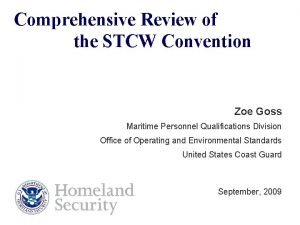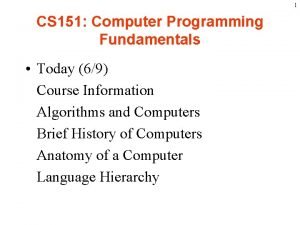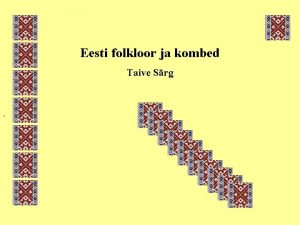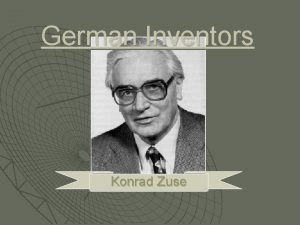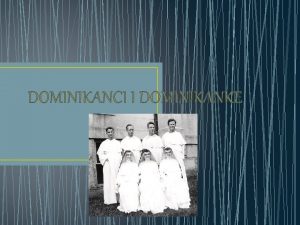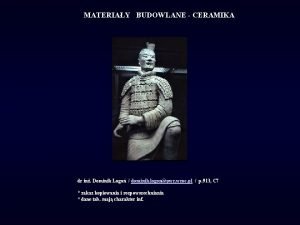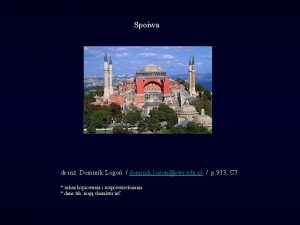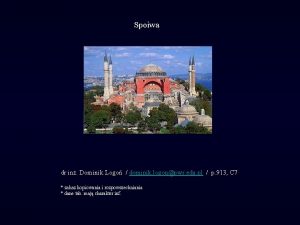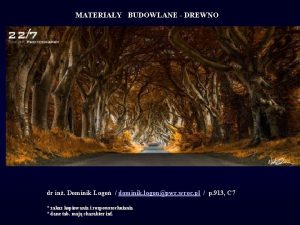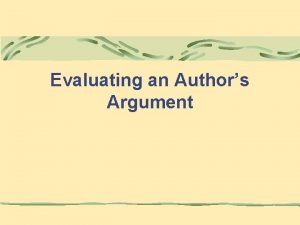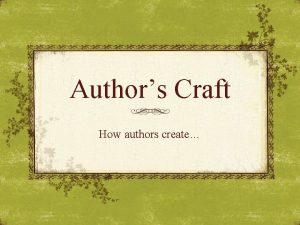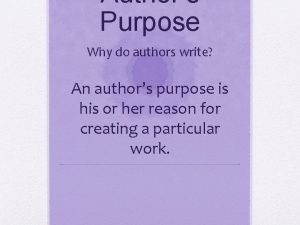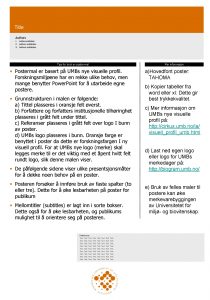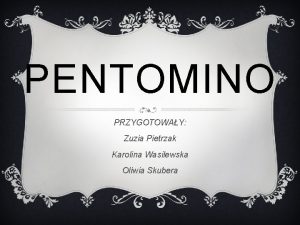Authors Kacper Pietrzak Konrad Kondrasiak Dominik Goss Suppervised

























- Slides: 25

Authors: Kacper Pietrzak, Konrad Kondrasiak, Dominik Goss Suppervised by: Małgorzata Stasińska Primary School numer 6 in Zgierz with Bilingual and Sports

What’s the War of Roses? Co to jest Wojna Róż? The War of Roses was the Wojna Róż była największą largest Civil War in England. It was the war between the York (they had a white rose on their flags) and the Lancaster (a red rose) familes. They both claimed to be the heirs of the kings so the English thron should belong to them. wojną domową w Anglii. Była to wojna pomiędzy rodami Yorków (na sztandarach mieli białą różę )i Lancasterów (czerwona róża). Oba rody twierdziły, że są potomkami królów i należy im się Angielski tron.

The House of Lancasters Ród Lancasterów The House of York Ród Yorków

King Henry VI, probably after his French grandfather, inherited mental illness, which is why the York family was waiting for a certain takeover of the throne. Unexpectedly, the queen – Margaret of Anjou- gave birth to a son, but it was almost certain that it was not a child of Henry VI (rumors about the queen's affair were loud). The Yorkers initiated a rebellion, which started a civil war. It started in 1455, when Richard from the York family gathered the troops around London and on May 22 nd, led them to the battle of St. Albans. Król Henryk VI, prawdopodobnie po swoim francuskim dziadku, odziedziczył chorobę umysłową, dlatego też ród Yorków oczekiwał na pewne przejęcie tronu. Niespodziewanie królowa – Małgorzata Andegaweńska – urodziła syna, ale było niemal oczywiste, że nie jest to dziecko Henryka VI (głośne były plotki o romansie królowej). Yorkowie wszczęli bunt, który zapoczątkował wojnę domową. Zaczęło się w 1455 roku, kiedy Richard z rodziny Yorków zebrał swoje wojska wokół Londynu, a 22 maja doprowadził do bitwy pod St. Albans.

Margaret of Anjou Małgorzata Andegaweńska King Henry VI Król Henryk VI

The counselor of the Yorks was Richard Neville, Earl of Warwick, nicknamed „The Kingmaker”. In 1460 he helped to overthrow Henry VI. Edward of York became the next king taking the name of Edward IV. Warwick, however, decided that the Yorkers did not repay him as well as they should, for his services, so he went to the Lancasters’ side. This resulted in the overthrow of Edward IV and the return of Henry VI's on the throne of England after the Battle of Wakefield. Doradcą Yorków był Richard Neville, hrabia Warwick, nazywany „twórcą królów”, który doprowadził w roku 1460 do obalenia Henryka VI. Na jego miejsce osadzono na tronie przedstawiciela rodu Yorków Edwarda, który stał się Edwardem IV. Warwick uznał jednak, że Yorkowie nie odwdzięczyli mu się tak, jak należy, za jego usługi, więc przeszedł na stronę Lancasterów, co spowodowało obalenie Edwarda IV i powrót na tron Henryka VI po bitwie pod Wakefield.

King Edward IV Król Edward IV Richard Neville The Earl of Warwick, The Kingmaker

Warwick Castle Warwick Zamek w

The Battle of Wakfield Bitwa pod Wakefield

In 1461 Henry VI was overthrown again, and the throne was restored to Edward IV, the winner of the Battle of Towton on March 29 th, 1461. This battle - one of the bloodiest in England's history, cost the lives of 20. 000 -30. 000 people. It ended the first phase of the War of Roses, strengthening the power of the York family. W roku 1461 Henryk VI został ponownie obalony, a tron przywrócono Edwardowi IV, zwycięzcy w bitwie pod Towton 29 marca 1461 r. Bitwa ta – jedna z najkrwawszych w historii Anglii – kosztowała życie 20 -30 tysięcy ludzi. Zakończyła ona pierwszą fazę Wojny Róż, umacniając władzę rodu Yorków.

Bitwa pod Towton

In 1470 Edward IV was forced to leave the country and flee to the Netherlands. After the assembly of some new troops in the same year, the battle of Barnet took place, during which Richard Neville lost his life. The next battle at Tewkesbury also failed to resolve the ongoing conflict. W roku 1470 Edward IV został zmuszony do opuszczenia kraju i zbiegł do Niderlandów. Po zebraniu nowych wojsk w tym samym roku doszło do bitwy pod Barnet, podczas której śmierć poniósł Ryszard Neville. Kolejna bitwa pod Tewkesbury również nie przyniosła rozstrzygnięcia w trwającym konflikcie.

The Battle of Barnet when the Earl of Warwick died Bitwa pod Barnet, podczas której zginął Earl Warwick

In 1471, Henry VI died. Twelve years later, in 1483 Edward IV died. His 13 -year-old son, Edward V, sat on the throne. His father’s brother Richard of York claimed that he and his younger brother, a 10 -year-old Richard, are illegal children because he wanted to become the next king himself. Soon after that both children disappeared without a trace (they were probably murdered by their uncle Richard III, but according to some historians, they were murdered by Henry VII after the Battle of Bosworth). W 1471 roku Henryk VI zmarł. Dwanaście lat później, w 1483 zmarł również Edward IV. Na tronie zasiadł jego trzynastoletni syn, Edward V. Brat jego ojca Richard z Yorku twierdził, że on i jego dziesięcioletni brat są nieślubnymi dziećmi, ponieważ sam chciał zasiąść na tronie. Wkrótce potym obydwaj bracia zniknęli bez śladu (prawdopodobnie zostali oni zamordowani przez swojego stryja Ryszarda III, według niektórych historyków zostali zamordowani przez Henryka VII po bitwie pod Bosworth).

Edward V and his brother Richard Edward V i jego brat Ryszard Richard III Ryszard III Henry VII Henryk VII

The battle of Bosworth Bitwa pod Bosworth

The crimes of Richard III caused another rebellion, this time against him. It was headed by Henry Tudor, who was related by his mother to the Lancasters. In 1485, the battle of Bosworth took place. Richard III died in this battle. Shakespeare made him a hero of his play Richard III and gave him a famous citation: „A horse, a horse, my kingdom for the horse”. Henry Tudor became the new ruler of England, as Henry VII. The first of Tudors. Zbrodnie Ryszarda III spowodowały kolejny bunt, tym razem przeciwko niemu. Na jego czele stanął spokrewniony przez swoją matkę z Lancasterami Henryk Tudor. W 1485 roku doszło do bitwy pod Bosworth. Ryszard III zginął w tej bitwie. Jego postać upamiętnił Szekspir w w Ryszardzie III wkładające mu w usta słynne zawołanie: „Konia! Królestwo za konia!”). Henryk Tudor został nowym władcą Anglii, jako Henryk VII. Pierwszy z rodu Tudorów.

Henry Tudor, later Henry VII Henryk Tudor, później Henryk VII

The reign of the Tudor dynasty began. The next two years the Lord of England devoted to the fight against the pretenders to the throne, including defeating Simnel in the battle of Stoke. Eventually, the war ended after the death of the last pretender to the throne, Perkin Warbeck. The Battle of Bosworth ended the history of medieval England. Rozpoczęło się panowanie dynastii Tudorów. Kolejne dwa lata władca Anglii poświęcił na walkę z pretendentami do tronu, m. in. Pokonując w bitwie pod Stoke Lamberta Simnela. Ostatecznie wojna zakończyła się po śmierci ostatniego pretendenta do tronu Perkina Warbecka. Bitwa pod Bosworth zakończyła historię średniowiecznej Anglii.

Perkin Warbeck Lambert Simnel


Dates of the battles Chronological list of battles Chronologiczna lista bitew First Battle of St Albans (22 May 1455) Pierwsza bitwa pod St Albans (22 maja Battle of Blore Heath (23 September 1459) 1455) Battle of Ludford Bridge (12 October 1459) Bitwa pod Blore Heath (23 września 1459) Battle of Sandwich (1460) (15 January Bitwa o Ludford Bridge (12 października 1460) 1459) Bitwa of Sandwich (1460) (15 Battle of Northampton (1460) (10 July stycznia 1460) Bitwa pod Northampton 1460) (10 lipca 1460) Bitwa pod Worksop Battle of Worksop (16 December 1460) (16 grudnia 1460) Battle of Wakefield (30 December 1460) Bitwa pod Wakefield (30 grudnia 1460) Battle of Mortimer's Cross (2 February Bitwa pod Krzyżem Mortimera (2 lutego 1461) Druga bitwa pod St Albans (17 lutego Second Battle of St Albans (17 February 1461) Bitwa pod Ferrybridge (28 marca 1461) Battle of Ferrybridge (28 March 1461) Bitwa pod Towton (29 marca 1461) Battle of Towton (29 March 1461) Bitwa pod Hedgeley Moor (25 kwietnia Battle of Hedgeley Moor (25 April 1464) Bitwa pod Hexham (15 maja 1464) Battle of Hexham (15 May 1464) Bitwa pod Edgecote Moor (26 lipca 1469) Battle of Edgecote Moor (26 July 1469) Bitwa pod polem Losecoat (12 marca 1470) Battle of Losecoat Field (12 March 1470) Bitwa pod Barnet (14 kwietnia 1471)


Sources Źródła Literatura obcojęzyczna Foreign language literature • Charles Ross: The Wars Of The Roses, Nowy Jork 1994 The Roses, New York 1994 • Jurgen Sarnowsky: England im Mittelalter, Darmstadt 2002 • Alison Weir: Wars Of The Roses, New York 1995 Roses, Nowy Jork 1995 In literature the topic of the War of Two Roses appeared, among W literaturze pięknej temat others in William Shakespeare's Wojny Dwóch Róż pojawił się drama Henry VI, Richard III and m. in. w dramatach Williama in the poem by Samuel Daniel, Szekspira Henryk VI, Ryszard III oraz w wierszu Samuela The Civil War. Daniela Wojna domowa.

THANKS FOR WATCHING OUR PRESENTATION
 Suppervised
Suppervised Kacper szczurek
Kacper szczurek Sanford christie barnum
Sanford christie barnum Kacper kalina
Kacper kalina Thesis statement gun control
Thesis statement gun control Goss urbanite press
Goss urbanite press Jon goss
Jon goss Zoe goss
Zoe goss Elżbieta pietrzak fotografia
Elżbieta pietrzak fotografia Cechy dobrej prezentacji multimedialnej
Cechy dobrej prezentacji multimedialnej Konrad schroeder
Konrad schroeder Sonia parras konrad
Sonia parras konrad Konrad
Konrad Konrad zuze
Konrad zuze Konrad wolak
Konrad wolak Konrad jako wieszcz
Konrad jako wieszcz Konrad mägi
Konrad mägi Konrad lorenz ochetta martina
Konrad lorenz ochetta martina Hochsensibilität schmerzempfinden
Hochsensibilität schmerzempfinden Konrad lewna
Konrad lewna German school system chart
German school system chart Konrad pesendorfer
Konrad pesendorfer Konrad riek
Konrad riek Konrad eiler
Konrad eiler Looper cicd
Looper cicd Vilhelm konrad rendgen
Vilhelm konrad rendgen







